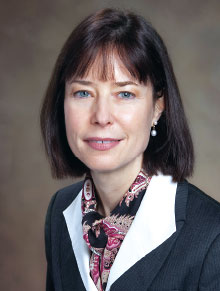‘Snapchat Dysmorphia’ Identified as New Variant of Body Dysmorphia
Abstract
Patients seeking surgery to look like their filtered selfies need psychiatric care, not surgery, a cosmetic surgeon warns.
Patients seeking cosmetic surgery to look more like their filtered selfies are spurring a phenomenon dubbed “Snapchat dysmorphia,” according to an editorial posted August 2 in JAMA Facial Plastic Surgery.

In the editorial, Neelam Vashi, M.D., director of the Cosmetic and Laser Center and an assistant professor of dermatology at Boston University School of Medicine, cautioned clinicians to be aware of this increasingly prevalent phenomenon.
In the most recent survey from the American Academy of Facial Plastic and Reconstructive Surgery (AAFPRS), 55 percent of respondents reported seeing patients who sought surgery to look better in selfies—a sharp rise from 42 percent a year earlier. An AAFPRS press release announced that “selfie awareness is here to stay.”
Katharine Phillips, M.D., is a professor of psychiatry at Weill Cornell Medical College and a leading expert on body dysmorphic disorder (BDD). She is the author of Cognitive Behavioral Therapy for Body Dysmorphic Disorder: A Treatment Manual and numerous research articles.
“New sociocultural phenomena can get incorporated into the symptoms of a disorder and potentially exacerbate the disorder,” said Phillips. “Snapchat dysmorphia is not a new psychiatric disorder—it’s just a new way that people check their appearance and then present their request for surgery to surgeons.”
Once cell phones became ubiquitous, people started taking many selfies, repeatedly scrutinizing the outcome and morphing their photos, said Phillips. While in the past patients used to bring surgeons celebrity photos, now they bring their morphed selfies—a technological variant in their pursuit of an idealized and unrealistic image.
The suffering involved in BDD is not always appreciated, said Phillips. “It’s often a severe condition. People with BDD can kill themselves because they’re so distressed and often very functionally impaired.”
Cosmetic treatment is not only ineffective; it also poses a real risk for surgeons, who become the focus of resentment by postsurgical patients who perceive no change, Phillips said. “This makes sense because the problem in BDD is not with actual appearance; it’s a problem with distorted body image and a tendency to obsess and be distressed by minimal or even nonexistent flaws in appearance.”

Katharine Phillips, M.D., said that morphed selfies are a technological variant in pursuit of an idealized and unrealistic self-image.
The good news, however, is that “the vast majority of patients improve if they receive evidence-based treatments that are properly implemented,” Phillips noted. About 85 percent to 90 percent of people getting appropriate treatment—which consists of high-dose selective serotonin reuptake inhibitors and cognitive-behavioral therapy—eventually improve substantially or even achieve total remission, she said.
Hilary Weingarden, Ph.D., is a clinical psychologist at Massachusetts General Hospital, a psychology instructor in the Department of Psychiatry at Harvard Medical School, and author of numerous published articles on BDD. Technologies such as Snapchat have provided new ways to ritualize obsessions about appearance, she said. While in the past patients would have constantly checked a mirror, now they take selfie after selfie and use filters to alter the image.
Seeing the morphed photo and the response on social media serves to reinforce the ritualization. The rituals are enormously time consuming, often taking three to eight hours a day for someone who has full-blown body dysmorphic disorder, she said.
The norm has become not just celebrities, but also comparisons to idealized, morphed images of peers on social media, Weingarden noted. People start to think that “this is what the rest of the world looks like in photos.”
The use of rituals is often a “short-term solution to lowering anxiety,” but the continued use of rituals, including filtered selfies, perpetuates the anxiety and the dysmorphia, said Weingarden. Psychiatrists can help people test whether their fears about rejection or social disapproval are realistic, and if they find that they are not, this can help them move away from their compulsive behaviors, said Weingarden. ■
“Selfies—Living in the Era of Filtered Photographs” can be accessed here.



